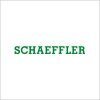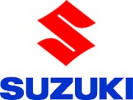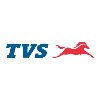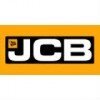Supplier Quality Assurance Engineer
30+ Supplier Quality Assurance Engineer Interview Questions and Answers

Asked in Star Engineers India

Q. How do you improve the worst performing supplier in a supplier rating system?
To improve the worst performing supplier, a systematic approach can be taken involving evaluation, communication, collaboration, and continuous improvement.
Evaluate the root causes of poor performance through data analysis and supplier audits.
Communicate the performance issues with the supplier, clearly outlining expectations and areas for improvement.
Collaborate with the supplier to develop corrective action plans and set measurable goals.
Regularly monitor and review the sup...read more

Asked in PIX Transmissions

Q. What do you know about the quality assurance process?
Quality assurance process ensures that products or services meet specified requirements and standards.
Quality assurance is a systematic approach to prevent defects and ensure customer satisfaction.
It involves planning, executing, and evaluating activities to meet quality objectives.
Key components include quality planning, quality control, and quality improvement.
Methods such as inspections, audits, and testing are used to ensure compliance.
Documentation and record-keeping are...read more
Supplier Quality Assurance Engineer Interview Questions and Answers for Freshers

Asked in Star Engineers India

Q. How do you perform supplier performance evaluations, audits, and qualifications?
Supplier performance, audit, and qualification are performed through a systematic process to ensure quality and compliance.
Establish clear performance criteria and metrics for suppliers
Conduct regular audits to assess supplier capabilities and compliance with quality standards
Qualify suppliers based on their ability to meet requirements and provide consistent quality
Monitor supplier performance through scorecards and feedback mechanisms
Implement corrective actions and continu...read more

Asked in Star Engineers India

Q. How do you control and overcome a legacy quality system?
To control and overcome legacy quality systems, it is important to assess the current system, identify gaps, develop a transition plan, and implement necessary changes.
Conduct a thorough assessment of the existing quality system to understand its strengths and weaknesses
Identify gaps and areas for improvement by comparing the legacy system with industry standards and best practices
Develop a transition plan that outlines the steps and timeline for implementing changes
Involve k...read more

Asked in Schaeffler India

Q. Types of gates and two stroke and four stroke different
Gates are used in IC engines to control the flow of air/fuel mixture. Two-stroke engines complete a cycle in two strokes, while four-stroke engines complete it in four strokes.
In two-stroke engines, the intake and exhaust valves are not present, and the fuel is mixed with air in the crankcase.
In four-stroke engines, the intake and exhaust valves are present, and the fuel is mixed with air in the carburetor.
Types of gates include intake and exhaust gates, which control the flo...read more

Asked in Star Engineers India

Q. Explain an 8D case study, including all principles and your contributions.
8D is a problem-solving methodology used in Supplier Quality Assurance. It consists of 8 steps to identify, analyze, and resolve issues.
8D stands for 8 Disciplines and is used to address and solve problems in a systematic manner.
The 8 disciplines include: D1 - Form a team, D2 - Describe the problem, D3 - Develop interim containment actions, D4 - Identify root cause, D5 - Develop permanent corrective actions, D6 - Implement corrective actions, D7 - Prevent recurrence, and D8 -...read more
Supplier Quality Assurance Engineer Jobs




Asked in Star Engineers India

Q. Sampling plan and AQL condition to fix sampling plan
A sampling plan is a method used to select a subset of items from a larger population for inspection, and the AQL condition determines the acceptable quality level for the sampled items.
Sampling plans help ensure that a representative sample is selected for inspection.
The AQL condition sets the maximum number of defective items that can be accepted in the sample.
Sampling plans and AQL conditions are typically determined based on the level of risk and the desired level of conf...read more

Asked in Schaeffler India

Q. What types of engines and fuel are used in flights?
The type of engine and fuel used on flights varies depending on the aircraft and airline.
Different airlines use different types of engines and fuels depending on their preferences and the type of aircraft they operate.
Some common types of engines used on flights include turbofan, turboprop, and turbojet engines.
The most commonly used fuel for commercial flights is jet fuel, which is a type of kerosene.
Some airlines are also experimenting with alternative fuels such as biofuel...read more
Share interview questions and help millions of jobseekers 🌟


Asked in Star Engineers India

Q. How do you handle high-priority issues and important tasks, such as customer complaints?
Effectively managing customer complaints involves systematic analysis, communication, and proactive solutions to ensure quality assurance.
Prioritize complaints based on severity and impact on customer satisfaction.
Conduct root cause analysis to identify underlying issues; for example, using the 5 Whys technique.
Communicate transparently with customers about the status of their complaints and expected resolution timelines.
Implement corrective actions and preventive measures to...read more
Asked in Helical Auto Technology

Q. How many stages in APQP Process, PPAP process
APQP process has 5 stages: Planning, Product Design, Process Design, Product and Process Validation, Feedback and Continuous Improvement. PPAP process has 18 elements.
APQP process has 5 stages: Planning, Product Design, Process Design, Product and Process Validation, Feedback and Continuous Improvement.
PPAP process has 18 elements including design records, engineering change documents, control plan, etc.
Both processes are essential in ensuring quality and consistency in suppl...read more
Asked in Helical Auto Technology

Q. What is 8D, PPM, Supplier Audit
8D is a problem-solving methodology, PPM is a measure of defects, and Supplier Audit is an evaluation of supplier's quality management system.
8D is an eight-step problem-solving process used to identify, correct, and prevent recurring problems.
PPM stands for Parts Per Million and is a measure of the number of defective parts in a million parts produced.
Supplier Audit is a systematic evaluation of a supplier's quality management system to ensure they meet quality standards and...read more

Asked in Yazaki

Q. Name some electrical measuring instruments.
Electrical measuring instruments are tools used to measure electrical parameters like voltage, current, and resistance.
Multimeter: Measures voltage, current, and resistance in circuits.
Oscilloscope: Visualizes electrical signals over time, useful for analyzing waveforms.
Clamp Meter: Measures current flowing through a conductor without direct contact.
LCR Meter: Measures inductance (L), capacitance (C), and resistance (R) in components.
Power Meter: Measures electrical power in ...read more

Asked in suzuki motor gujarat

Q. Explain the working principle of the fuel rail.
The fuel rail is a component in the fuel system that delivers fuel to the injectors.
Fuel is pumped from the tank to the fuel rail
The fuel pressure regulator maintains a constant pressure in the fuel rail
Fuel is then delivered to the injectors which spray it into the engine
The fuel rail is made of metal to withstand high pressure and heat
Any blockages or leaks in the fuel rail can cause engine performance issues

Asked in TVS Motor

Q. What are the PPAP (Production Part Approval Process) documents?
PPAP documents are a set of documents used in the automotive industry to ensure suppliers meet quality standards.
PPAP documents include items such as design records, engineering change documents, process flow diagrams, control plans, measurement system analysis, and more.
They are used to demonstrate that the supplier has understood the customer's requirements and has processes in place to consistently meet those requirements.
PPAP documents are typically required by automotive...read more

Asked in Schaeffler India

Q. Define automobile and industry
Automobile is a vehicle designed for transportation on roads, and the automobile industry is the sector that designs, develops, manufactures, and sells automobiles.
Automobile is a four-wheeled vehicle powered by an internal combustion engine or an electric motor.
The automobile industry includes companies that design, develop, manufacture, and sell automobiles, such as Ford, Toyota, and General Motors.
The industry also includes suppliers of parts and components, such as Bosch ...read more
Asked in Belmaks Motors

Q. How can you contribute to our company's growth?
I can contribute to company growth by implementing quality control measures, improving supplier relationships, and optimizing processes.
Implementing quality control measures to ensure products meet standards and customer expectations
Improving supplier relationships to enhance communication and collaboration
Optimizing processes to increase efficiency and reduce costs
Identifying areas for improvement and implementing solutions to drive growth
Staying updated on industry trends a...read more

Asked in JCB

Q. Tell me about the fabrication process.
Fabrication process involves transforming raw materials into finished products through various manufacturing techniques.
Fabrication process can include cutting, bending, welding, machining, and assembling of materials.
Examples of fabrication processes include sheet metal fabrication, CNC machining, and 3D printing.
Quality control measures such as inspections and testing are crucial in ensuring the final product meets specifications.
Fabrication processes can vary depending on ...read more
Asked in Zeeta Electrical Engineering

Q. What are Cpk and Ppk?
Cpk and Ppk are statistical process capability indices used to assess the ability of a process to produce output within specification limits.
Cpk measures how well a process can meet the specifications using the actual data collected.
Ppk measures how well a process can meet the specifications using the overall process performance.
Both indices take into account the variability of the process and the distance between the process mean and the specification limits.
A Cpk or Ppk val...read more

Asked in SFO Technologies

Q. Explain the 7 QC tools with examples.
The 7 QC tools are basic tools used for quality control in manufacturing processes.
Check sheet: Used to collect and analyze data, such as defects in a product.
Control chart: Monitors process variation over time, helping to identify trends and abnormalities.
Histogram: Displays data distribution, showing the frequency of occurrence of a particular quality characteristic.
Pareto chart: Helps prioritize issues by showing the most significant factors contributing to a problem.
Scatt...read more

Asked in TVS Motor

Q. What is your level of knowledge regarding PPAP?
PPAP stands for Production Part Approval Process and is a standardized process in the automotive industry to ensure suppliers meet quality requirements.
PPAP is a standardized process in the automotive industry to ensure suppliers meet quality requirements
It involves submitting documentation such as design records, process flow diagrams, and control plans
PPAP typically consists of 18 elements including dimensional results, material certifications, and part samples
The purpose o...read more

Asked in American Axle & Manufacturing

Q. How does a differential work?
Differential is a device that splits torque between two wheels on an axle, allowing them to rotate at different speeds.
Differential is used in vehicles with two wheels on the same axle, such as cars and trucks.
It allows the wheels to rotate at different speeds while still receiving power from the engine.
The differential consists of a ring gear, pinion gear, and side gears.
When a vehicle turns, the outside wheel travels a greater distance than the inside wheel, and the differe...read more

Asked in JCB

Q. Types of welding, defects of welding
Types of welding include MIG, TIG, stick, and flux-cored. Common defects in welding include porosity, lack of fusion, and cracks.
Types of welding: MIG, TIG, stick, flux-cored
Defects in welding: porosity, lack of fusion, cracks
Porosity: caused by gas entrapment during welding process
Lack of fusion: incomplete bonding between weld metal and base metal
Cracks: can occur due to high stress or improper welding technique

Asked in suzuki motor gujarat

Q. Explain the working principle of HPRV.
HPRV regulates pressure in a system by opening and closing based on set pressure limits.
HPRV stands for High-Pressure Relief Valve
It is used to regulate pressure in a system to prevent damage or failure
The valve opens when pressure exceeds a set limit and closes when pressure drops below the limit
HPRVs are commonly used in industrial and manufacturing settings
Examples include steam boilers, gas pipelines, and hydraulic systems

Asked in Hinduja Tech

Q. Supplier handling procedure
Supplier handling procedure involves a set of steps to ensure quality and reliability of supplied products or services.
Establishing clear quality requirements and expectations with suppliers
Conducting supplier audits to assess their capabilities and processes
Implementing supplier qualification and approval process
Monitoring supplier performance through metrics and key performance indicators
Addressing non-conformances and implementing corrective actions
Maintaining effective co...read more

Asked in Sun Pharmaceutical Industries

Q. What is Quality Control?
Quality control is a process used to ensure that products or services meet specified requirements and standards.
Quality control involves monitoring and inspecting products or services to identify defects or deviations from standards.
It includes implementing corrective actions to address any issues found during the monitoring process.
Quality control aims to prevent defects and ensure consistent quality in products or services.
Examples of quality control methods include statist...read more

Asked in Star Engineers India

Q. APQP process and importance
APQP is a process used in supplier quality assurance to ensure that suppliers meet quality requirements.
APQP stands for Advanced Product Quality Planning.
It is a structured process that helps in the development of new products or processes.
APQP involves cross-functional collaboration between suppliers and customers.
It includes various phases such as planning, design, development, validation, and production.
The importance of APQP lies in its ability to identify and mitigate po...read more

Asked in TVS Motor

Q. What is the problem-solving procedure for a process?
The problem-solving procedure for a process involves identifying the issue, analyzing the root cause, developing solutions, implementing the best solution, and monitoring the results.
Identify the problem or issue in the process
Analyze the root cause of the problem
Develop potential solutions to address the root cause
Implement the best solution
Monitor and evaluate the results to ensure effectiveness

Asked in suzuki motor gujarat

Q. All CNG Parts working principle
CNG parts work by regulating the flow of compressed natural gas into the engine.
CNG parts include a pressure regulator, fuel injectors, and a fuel tank.
The pressure regulator controls the flow of CNG from the tank to the engine.
The fuel injectors spray the CNG into the engine's combustion chamber.
The fuel tank stores the compressed natural gas until it is needed by the engine.
CNG parts are designed to work with engines that have been modified to run on natural gas.

Asked in AmbitionBox

Q. What is your long-term goal?
To become a senior leader in the field of Supplier Quality Assurance, driving continuous improvement and innovation.
Continuously improve supplier quality processes and systems
Lead cross-functional teams to drive quality initiatives
Develop expertise in quality standards and regulations
Mentor and develop junior quality assurance professionals
Achieve certifications and advanced degrees in quality management

Asked in JBM Group

Q. What is quality?
Quality is the measure of excellence or superiority of a product or service.
Quality is meeting or exceeding customer expectations.
It involves consistency, reliability, and conformance to requirements.
Quality can be measured through various metrics such as defect rates, customer satisfaction, and on-time delivery.
Continuous improvement is essential for maintaining and enhancing quality.
Examples of quality practices include Six Sigma, Total Quality Management (TQM), and Lean ma...read more
Interview Questions of Similar Designations
Interview Experiences of Popular Companies






Calculate your in-hand salary
Confused about how your in-hand salary is calculated? Enter your annual salary (CTC) and get your in-hand salary


Reviews
Interviews
Salaries
Users










